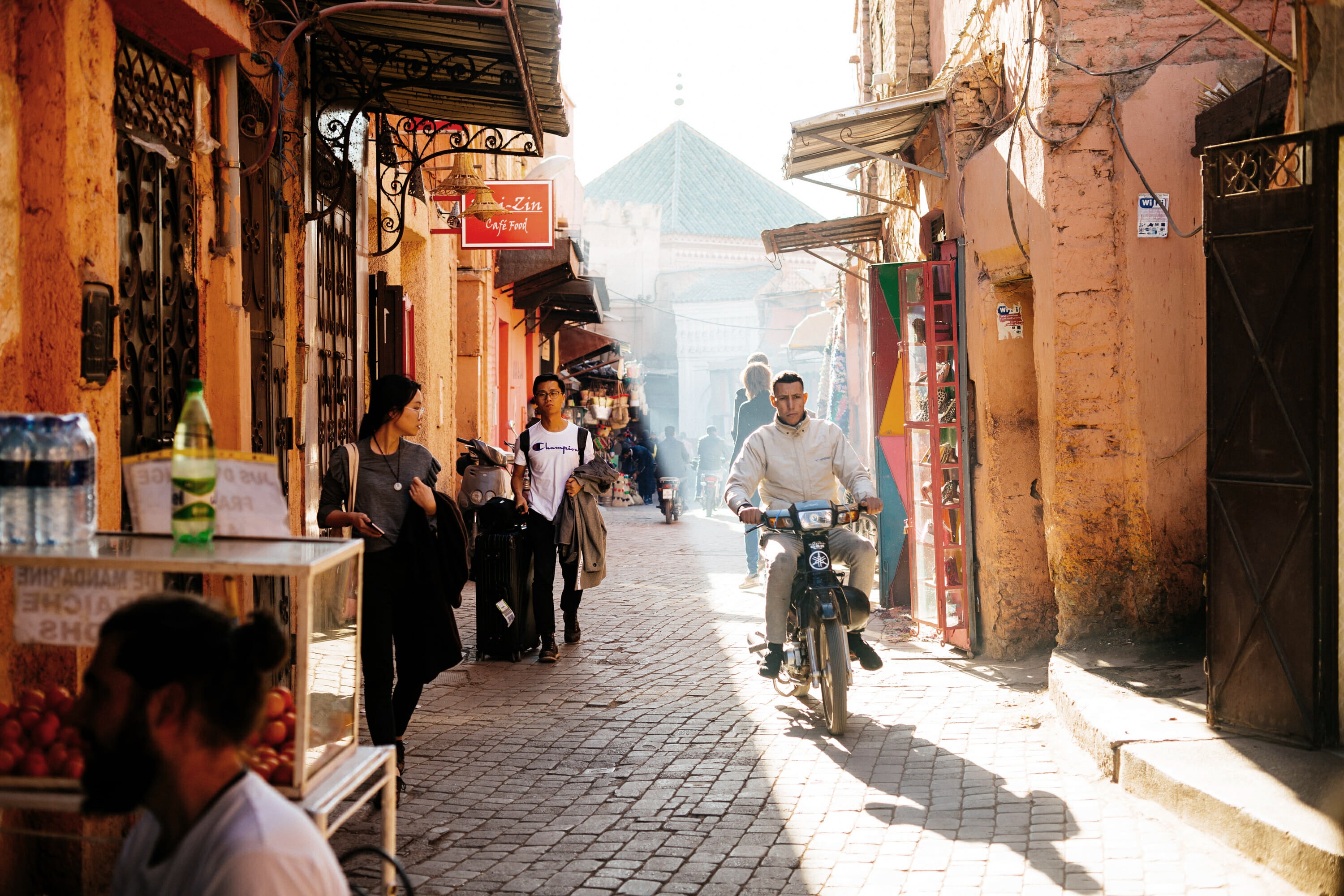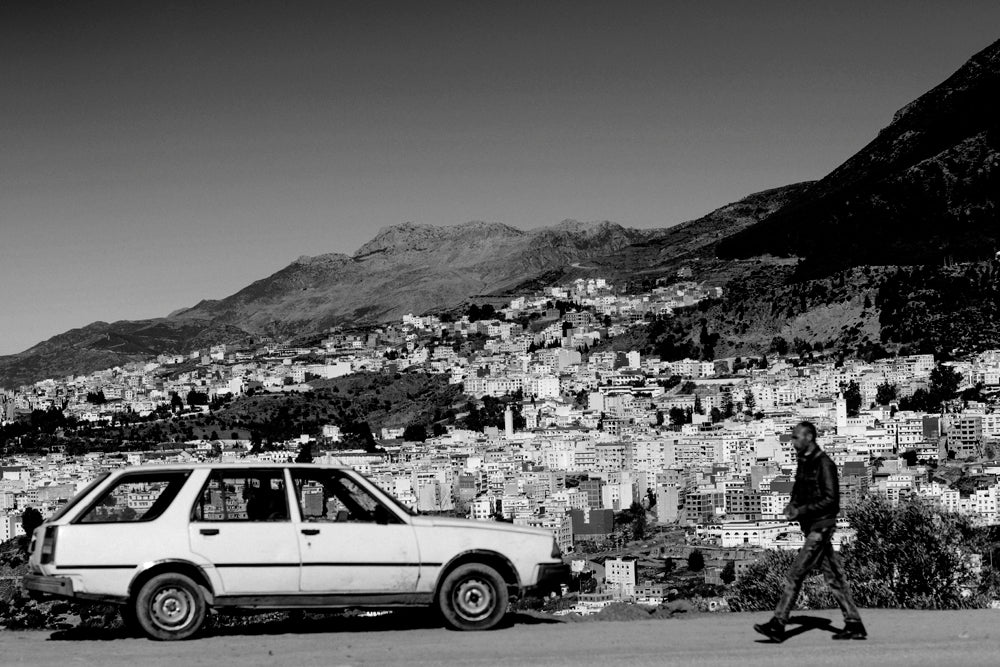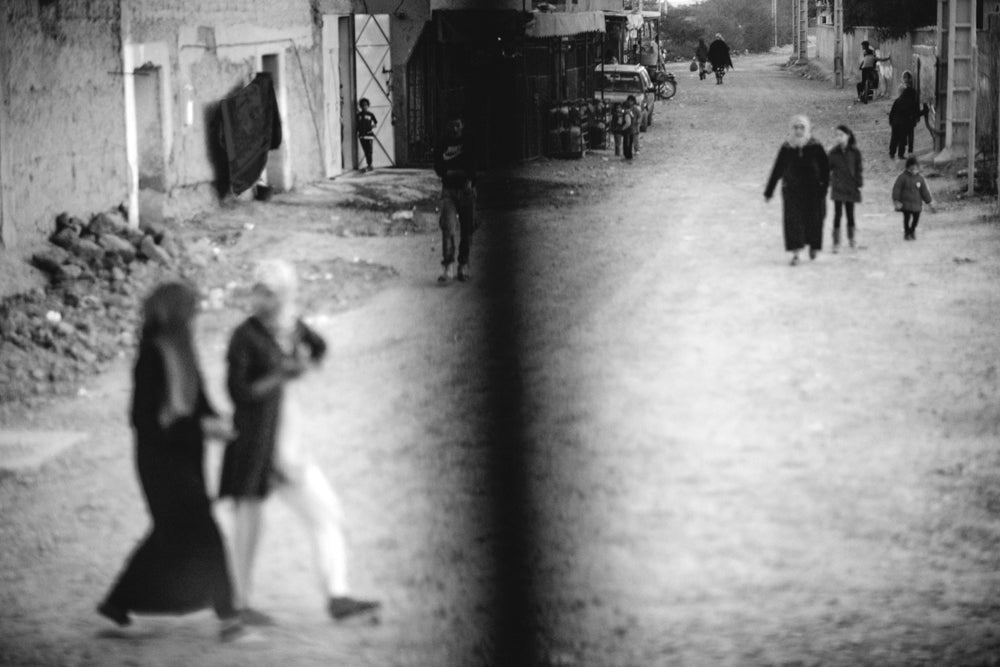Street Photography Tips for the Adventure Photographer


The essence of street photography is about documenting everyday life and society on the streets. You can find opportunities to practice street photography everywhere. For a lot of photographers, a photographic adventure means a road trip to a faraway place, a long hike through the mountains, or an overnight stay in the middle of the forest. It’s not uncommon to return from those trips with a ton of great shots and a story to tell. But there’s one place that some photographers rarely use as a storytelling backdrop, and it can be right in their own backyard or in a faraway place: a city.
During a recent trip through Portugal and Morocco, I decided to leave my hotel room early and wander through town. In Lisbon, I rented a car and traveled just outside the city to the Moorish castle. In Morocco, I took the to streets with my Langly Crossbody and lenses.
Street photography can seem like a daunting task. Hauling your gear through an urban environment while trying to capture a great image in the middle of rush hour might sound like a nightmare. But sometimes, the best pictures we take are the ones we capture while outside our comfort zone.
Whether you’re waiting out a long layover inside an airport or spending a Sunday afternoon outside your apartment, here are three quick tips to help you capture the essence of street photography.
Tip #1: Plan a Photo Walk
If you’re like me, you know how important it is to plan your adventure. Logistics to get you to your destination safely and on time can be just as important as making sure you packed your camera before you catch a flight. You should use those same skills when you’re planning your first venture into street photography. The only difference is that the wilderness you are exploring is paved and offers a mean latte.

Man setting up shops in the Medina of Fez. Fez, Morocco.
 A man walks along the outskirts of town. Chefchaouen, Morocco.
A man walks along the outskirts of town. Chefchaouen, Morocco.
Choose your lenses carefully. For urban imagery, I usually pack a selection of lenses to help my eye find the right frame. In Morocco, I used a Sony Ar7iii with a Canon 135mm f/2, a Sigma 35mm f/1.4, and a Lecia Summicron M 50mm f/1.4 with an adaptor. This combination of lenses gave me the ability to take wide, scenic shots or get tighter on a scene without alarming my subjects.
Use tools like Google Maps and TripAdvisor to research interesting architectural features in your city of choice. Use Wikipedia to scan the city history and any important monuments or historic sites. Get a feel for the area you plan to photograph. If you find something in your research that inspires you, jot it down.
Next, take all that information and plan a photo walk through the city. Determine what you’ll do at each location, whether you’re asking random strangers for portraits for a 100 Strangers Project or you’re trying to capture a personal story, à la Humans of New York. Even if you’re just going for the scenic architecture, know what you’re after when you arrive. You can always reevaluate once you’re there.

Image shot from a bus on the way to Chefchaouen.
Be sure to plan a few stops on your photo walk so that you can sit and take it all in. Especially if it’s your first time in town, start off in the tourist areas and work your way toward the more secluded parts of town.
Remember: This street photography tip has two parts. Urban images aren’t just about people; they’re also about the places where those people live. Explore the environment as well as the people who live there. Capture old buildings and interesting spaces while you navigate the city streets.
As you explore, keep your eye out for unique and unforgettable moments. They happen fast, and once they’re gone, they’re gone forever.
Tip 2: Stay Discrete

Butcher shop displays hanging camel head. Fez, Morocco.
Both wildlife photographers and physicists are familiar with the "observer effect". It’s the idea that the act of observing something changes how it behaves. Humans are notorious for this. If they see a camera pointed at them, they may conceal a part of the story you’re trying to capture by changing the way they interact.
Stay discrete and out of the way until it’s time to reveal yourself. You can’t set up a bird blind like you would in the middle of the forest, but you can sit down beside a diner window or at a cafe featuring an outdoor seating area and blend in while you wait for the opportune moment to arrive.
Keep your camera lowered while you wait. Some photographers see this as an opportunity to review pictures, but wait until you get home for that. Keep your head up and your eyes peeled. If your camera has a live view function and you’re using a longer lens, this is a great time to activate that feature. Use it to keep the camera low and away from your face.
Learn to shoot from the hip. Set your camera to a priority mode and shoot a little wider than usual. You can always crop the image closer to your subject in post-production.
 Mason workers restoring riad in Fez, Morocco.
Mason workers restoring riad in Fez, Morocco.
Alternatively, use a smaller camera.
Remember: This street photography tip isn’t just about keeping your camera low. It’s about discretion. If you haven’t already, take a look at a Cross-Body Camera Bag. It’s discrete, so you can keep your gear safe and concealed from prying eyes.
Before you leave home, take a few minutes to practice shooting from the hip and adjusting your live view settings. Knowing how to photograph on the fly while keeping your camera profile low is a great skill to have for street and urban photography.
Tip 3: Be Respectful

Tile maker cutting tiles by hand. Fez, Morocco.
If you’re photographing a deer and it spots you, it might run away. The same is true for most wildlife. In an urban environment, your photo subjects might not do that. They may notice you, approach you, and even ask you to stop. How you proceed is entirely up to you, but you should always be respectful when interacting with everyday people.
Before you head into town, have an explanation ready. If someone approaches you and demands an answer, it’s always better to have a purpose. If you’re conducting a photo project, tell them. If you’re simply trying to improve your skills, that’s okay, too. Just be ready to explain what you’re doing and why.
Remember: Respect runs both ways in this street photography tip. An explanation helps to mitigate the “creepiness” factor that someone might feel if you’re photographing them, but you should also be familiar with the local photography laws. It never hurts to have that knowledge and stay in compliance, even if it never comes up.
A great way to offset curiosity is with a business card, a few model release forms, and an invitation to take a photo of the curious individual. Having all of the necessary paperwork can lend an air of credibility, and it may be necessary anyway if you’re planning to publish your image as part of a larger project.
 Two women wait for bus next to a street vendor. Fez, Morocco.
Two women wait for bus next to a street vendor. Fez, Morocco.
Wrapping Up
And there you have it: three great street photography tips to help you get started on an adventure to an entirely new place.
Trade the mountains for skyscrapers for a few days, or head out into the city during a long layover on your next flight into the wilderness.
There’s something in street photography for everyone. All you have to do is take a walk.
Looking for a new camera bag to acompany you on your next photography adventure? Check out the Langly Camera Bag Range
Articles and photos by Evan Lane
- Tags: Resources



 A man walks along the outskirts of town. Chefchaouen, Morocco.
A man walks along the outskirts of town. Chefchaouen, Morocco.

 Mason workers restoring riad in Fez, Morocco.
Mason workers restoring riad in Fez, Morocco.
 Two women wait for bus next to a street vendor. Fez, Morocco.
Two women wait for bus next to a street vendor. Fez, Morocco.